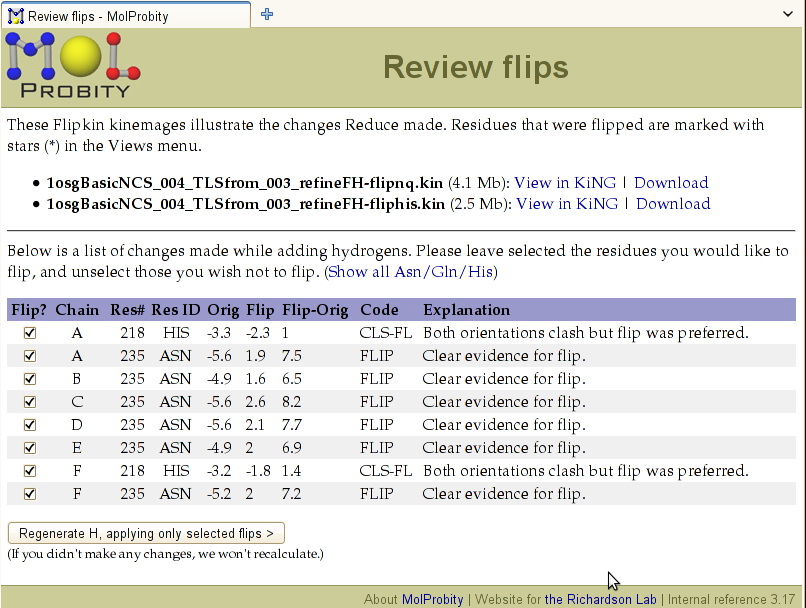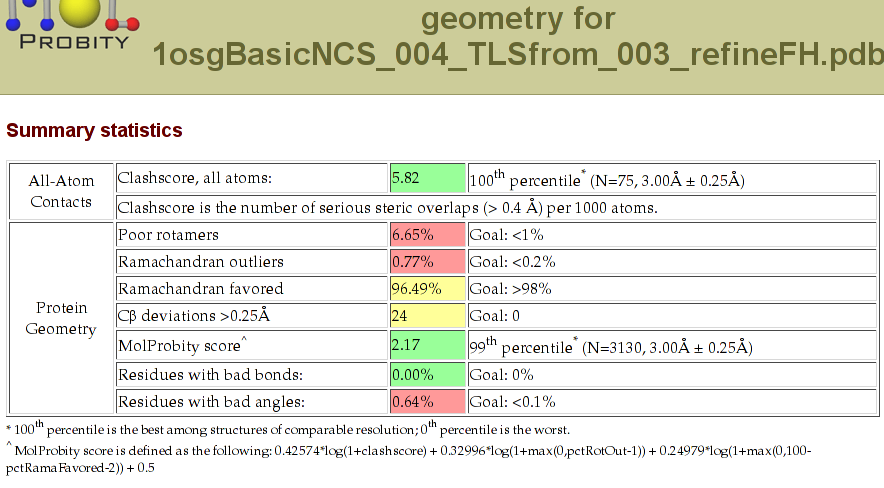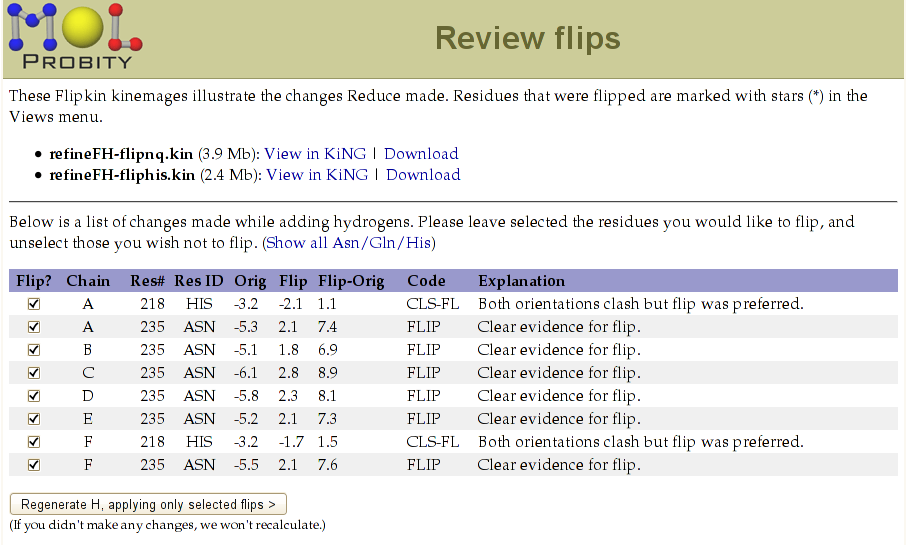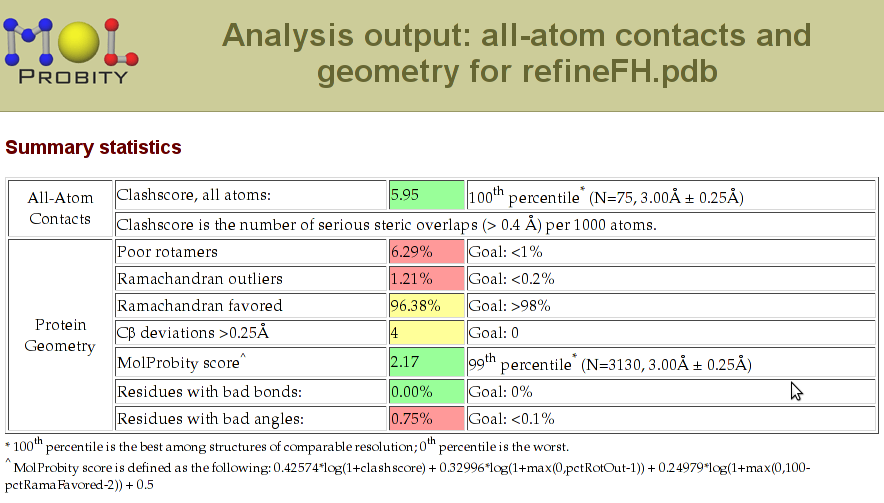
| Attachments | |
|---|---|
| mp-flipreview.png | 94K |
| 1osgBasicNCS_004_TLSfrom_003_refine.mtz | 2MB |
| mp-chirest2.png | 74K |
| add-chirest.mtz | 2MB |
| add-chirest.pdb | 1MB |
| mp-report.png | 72K |
| 1osgBasicNCS_004_TLSfrom_003_refine.pdb | 1MB |
| mp-chirest1.png | 83K |
A number of users find that autoBUSTER gives more molprobity C-beta deviations than their software of choice. See BUSTER FAQ for a discussion. This tutorial shows how to use restraints to reduce the effect.
We'll start with a pretty much finished refinement from a different example AutoBusterExample1osgExtraPeptideTLS: 1osg.
You have the 1osgBasicNCS_004_TLSfrom_003_refine.pdb and 1osgBasicNCS_004_TLSfrom_003_refine.mtz files available.
Upload 1osgBasicNCS_004_TLSfrom_003_refine.pdb to the molprobity site at http://molprobity.biochem.duke.edu
Click 'add hydrogens' to get the interim report
 which indicates that ASN 235 is probably the wrong way round in all six chains. Accept the flips, save the reduced PDB file, and proceed to 'Analyze all-atom contacts'. Keep the default set of actions and
reports, and let 'er rip; the final report is
which indicates that ASN 235 is probably the wrong way round in all six chains. Accept the flips, save the reduced PDB file, and proceed to 'Analyze all-atom contacts'. Keep the default set of actions and
reports, and let 'er rip; the final report is

To re-refine with C-alpha chirality restrained (which we do using an improper torsion term with a rather tight sigma of 1.7 degrees), you need to add an additional restraint file, which can be collected from
http://www.globalphasing.com/buster/wiki/plugin/attachments/BusterFAQ/protgeo_option_chiralrestraint_from_equilib.dat
This is quite a large structure and the run (with the command below) takes 2600 seconds on a fast quad-core PC
refine -p 1osgBasicNCS_004_TLSfrom_003_refine.pdb \
-m 1osg.mtz -autoncs -M TLSbasic \
-Gelly protgeo_option_chiralrestraint_from_equilib.dat \
-d add-chirest | tee add-chirest.lis
so the results are available as add-chirest.pdb and add-chirest.mtz
Upload add-chirest.pdb to the molprobity site and continue as before. The interim report

indicates that I didn't flip ASN 235 before the re-refinement; the final report

shows that we've got rid of twenty C-beta deviations.